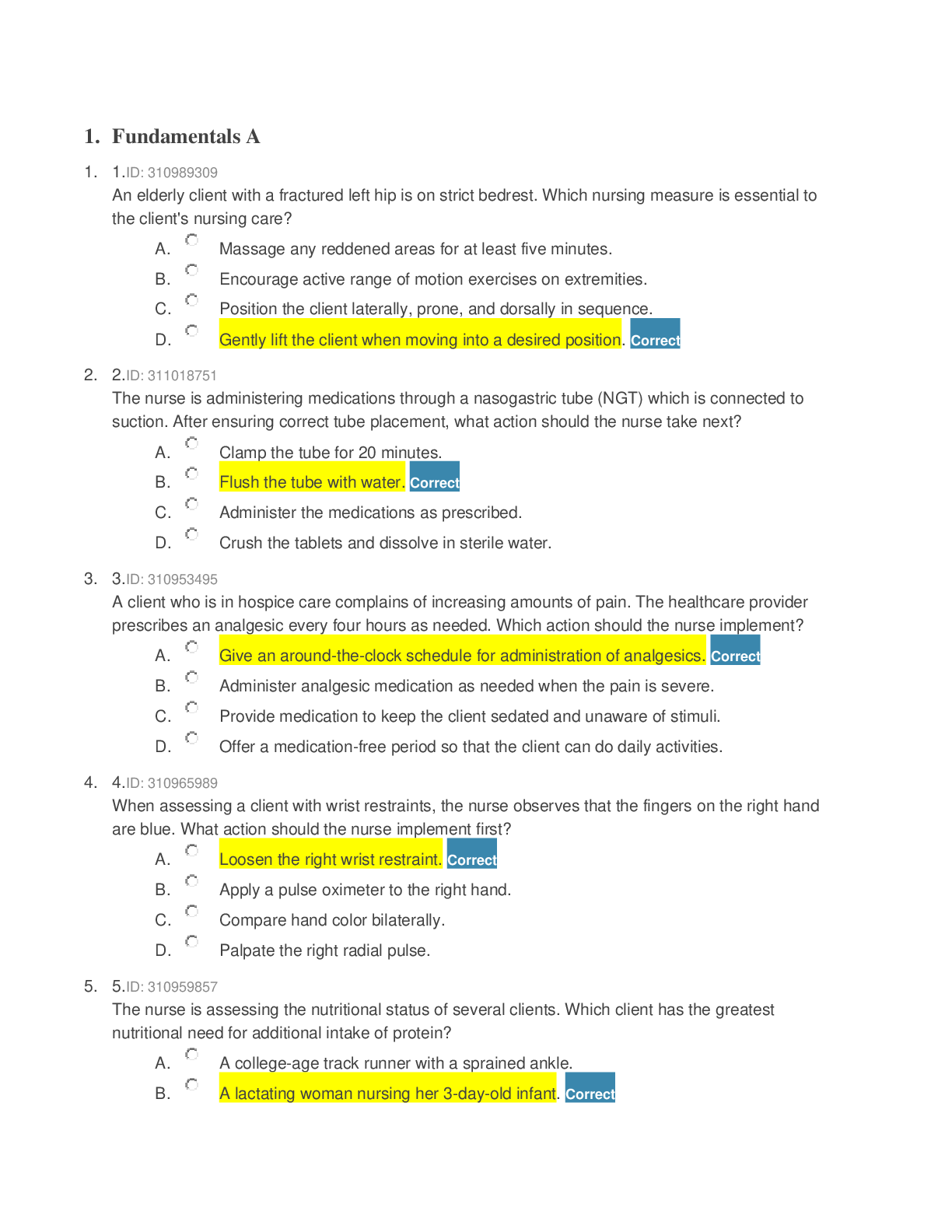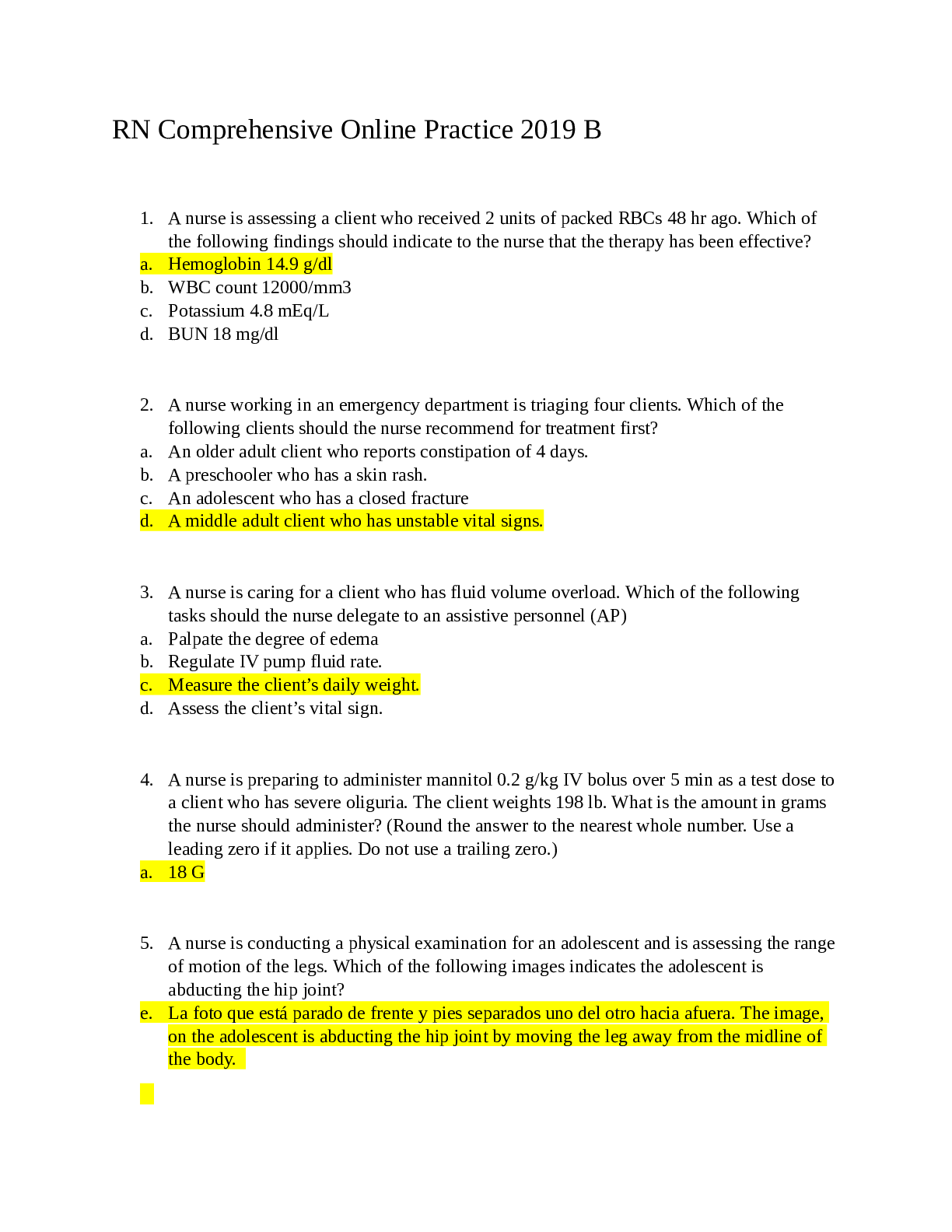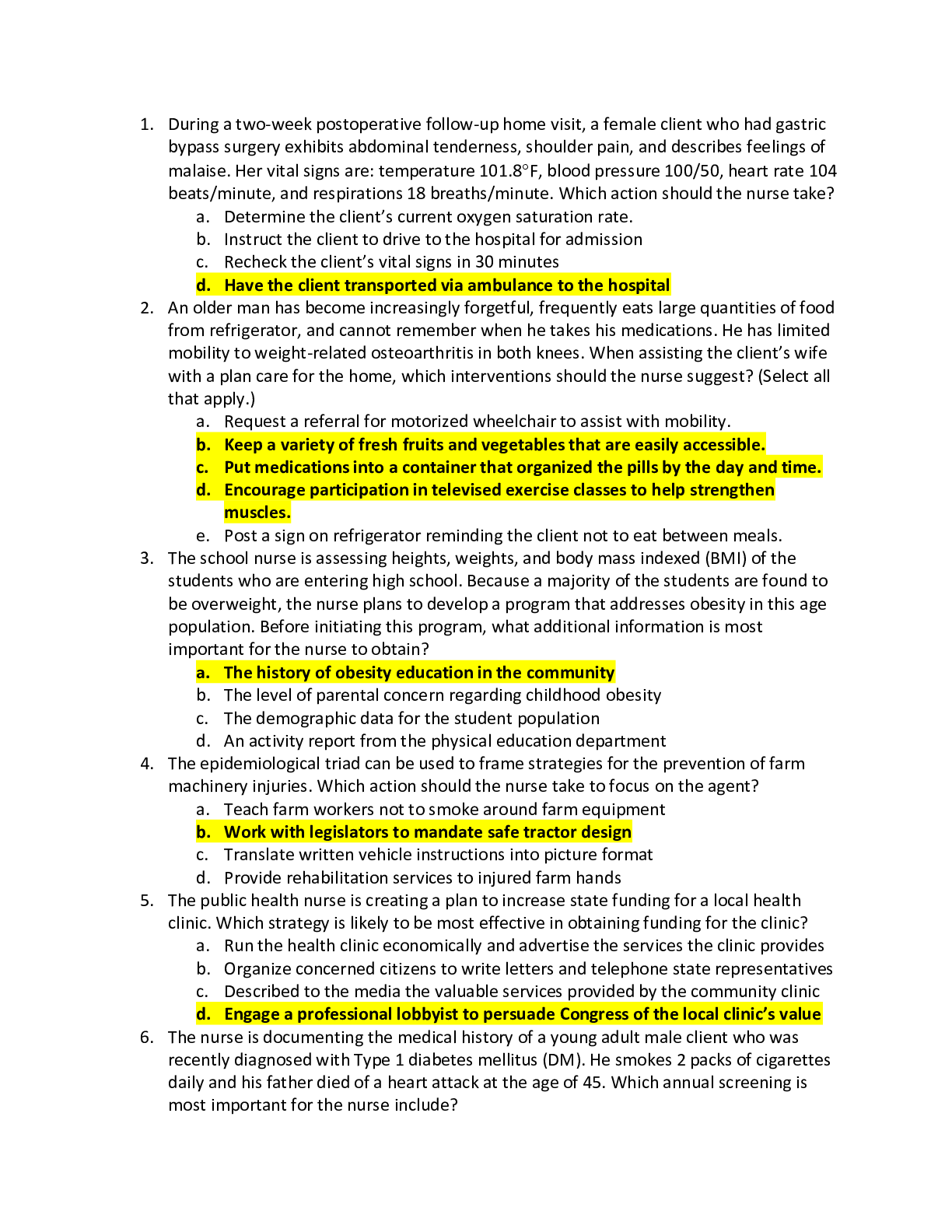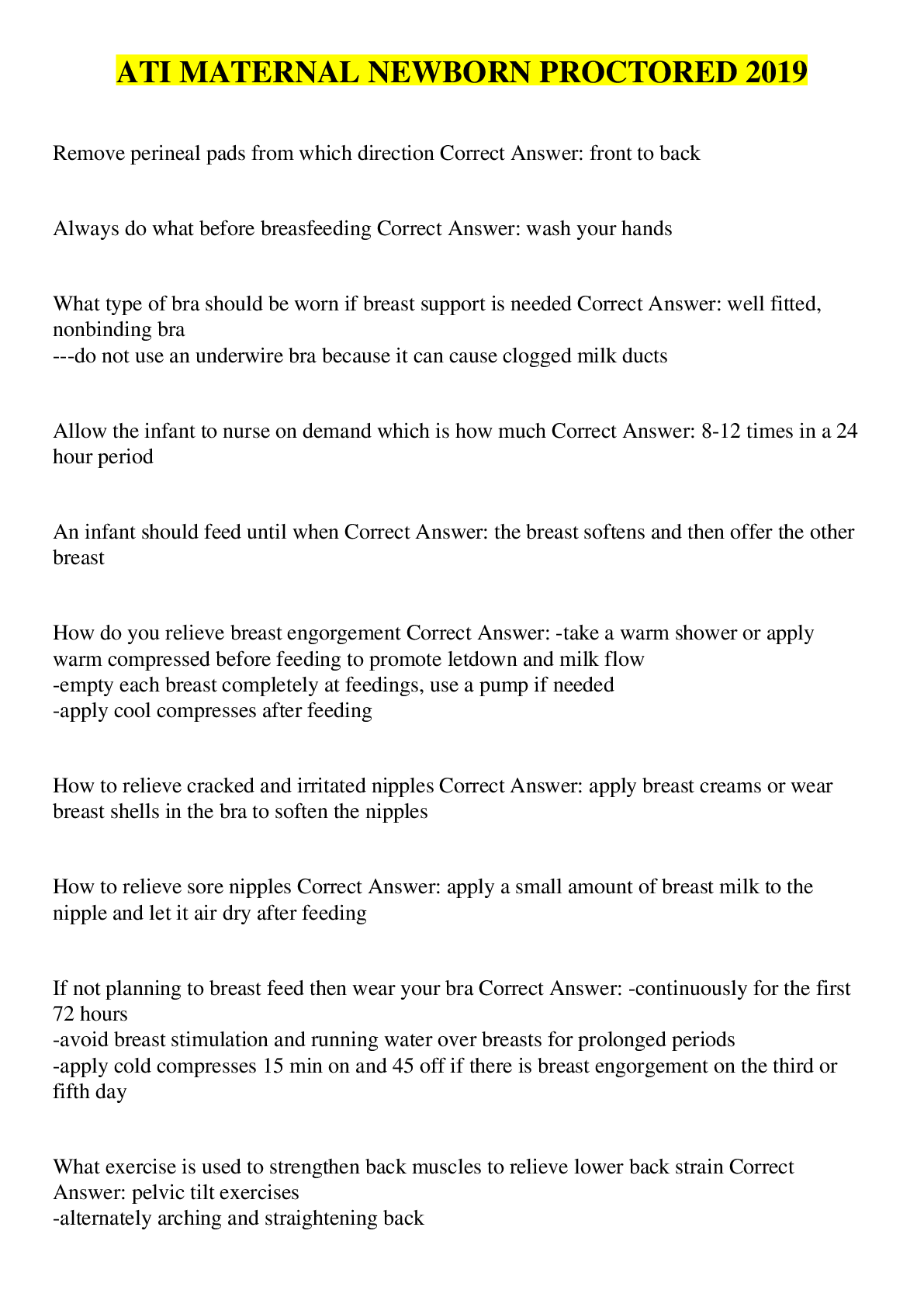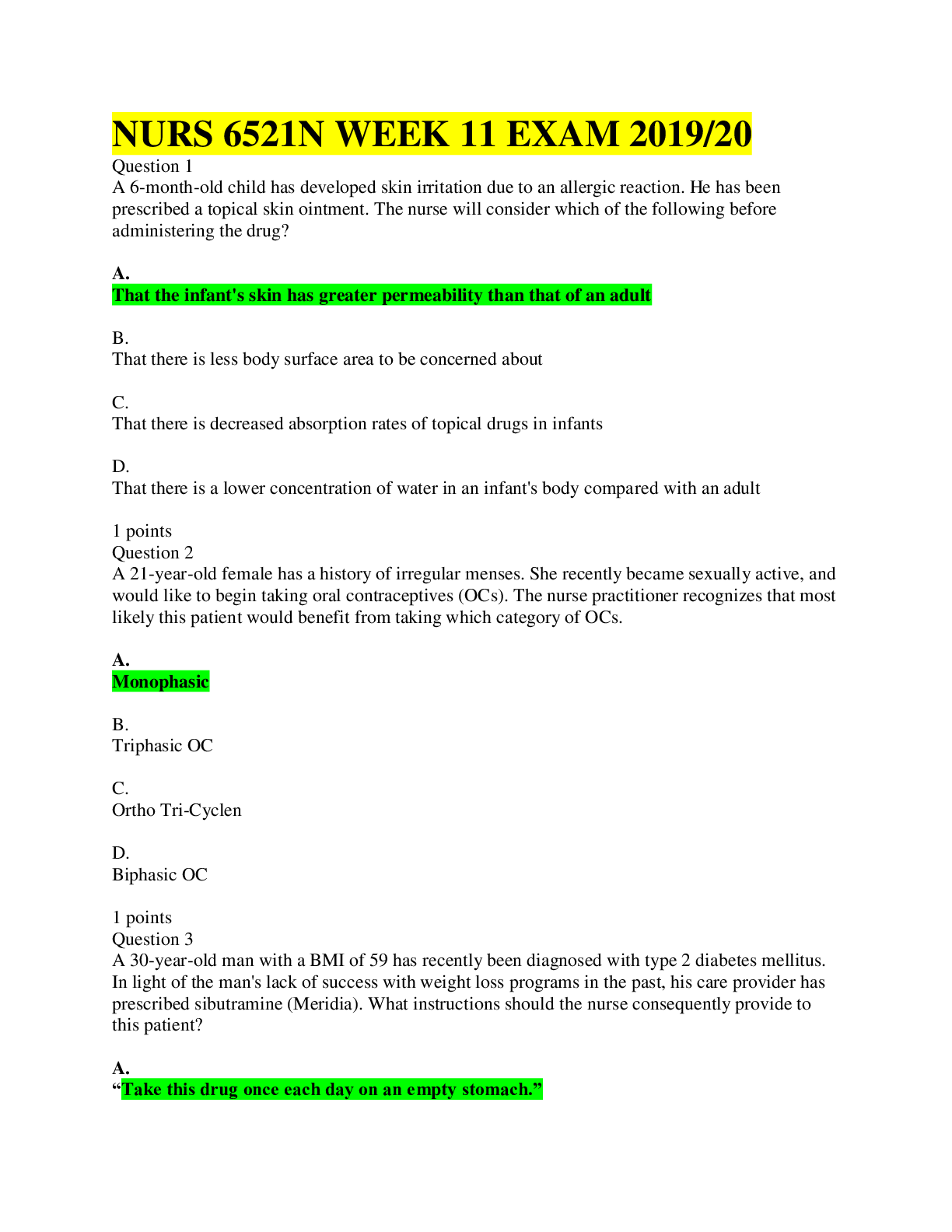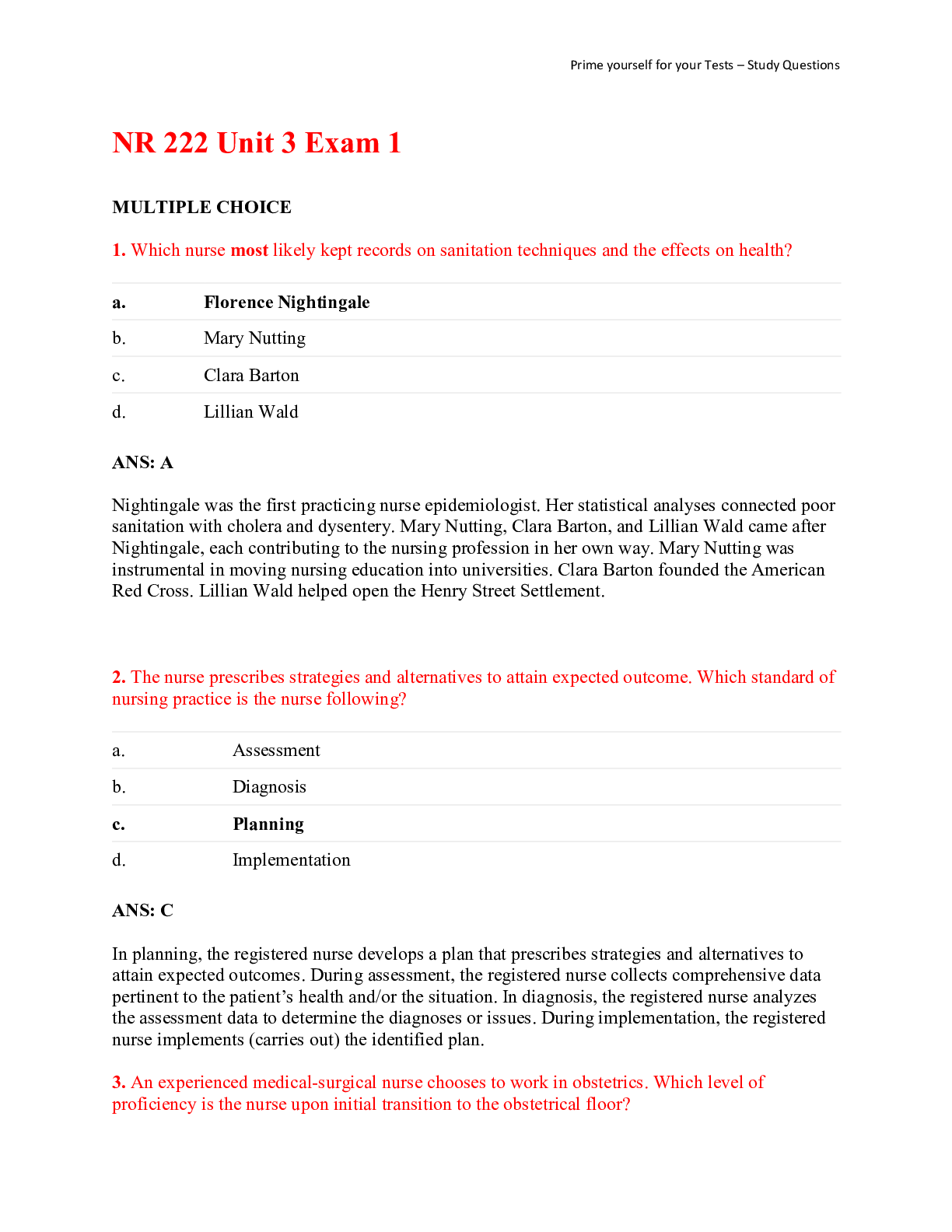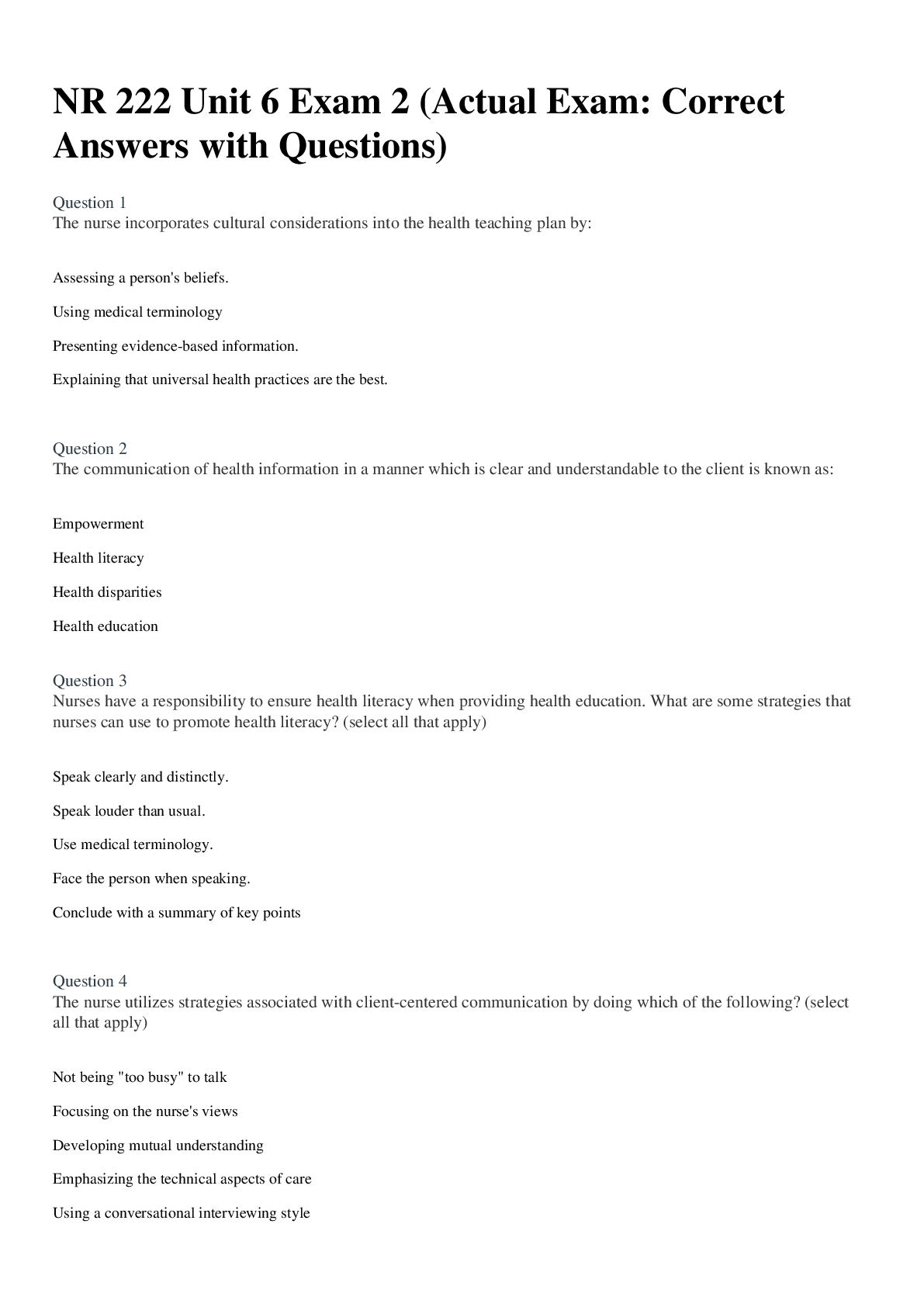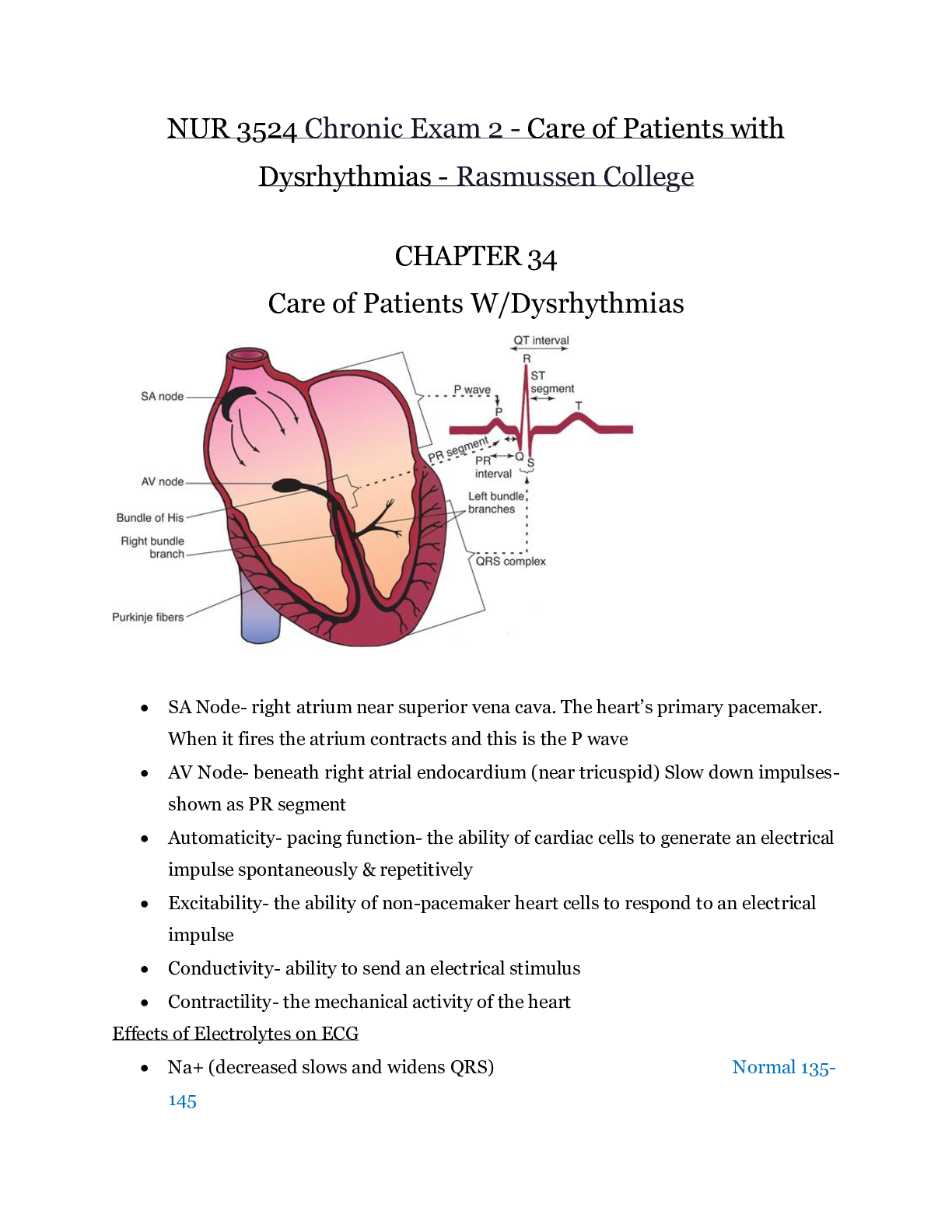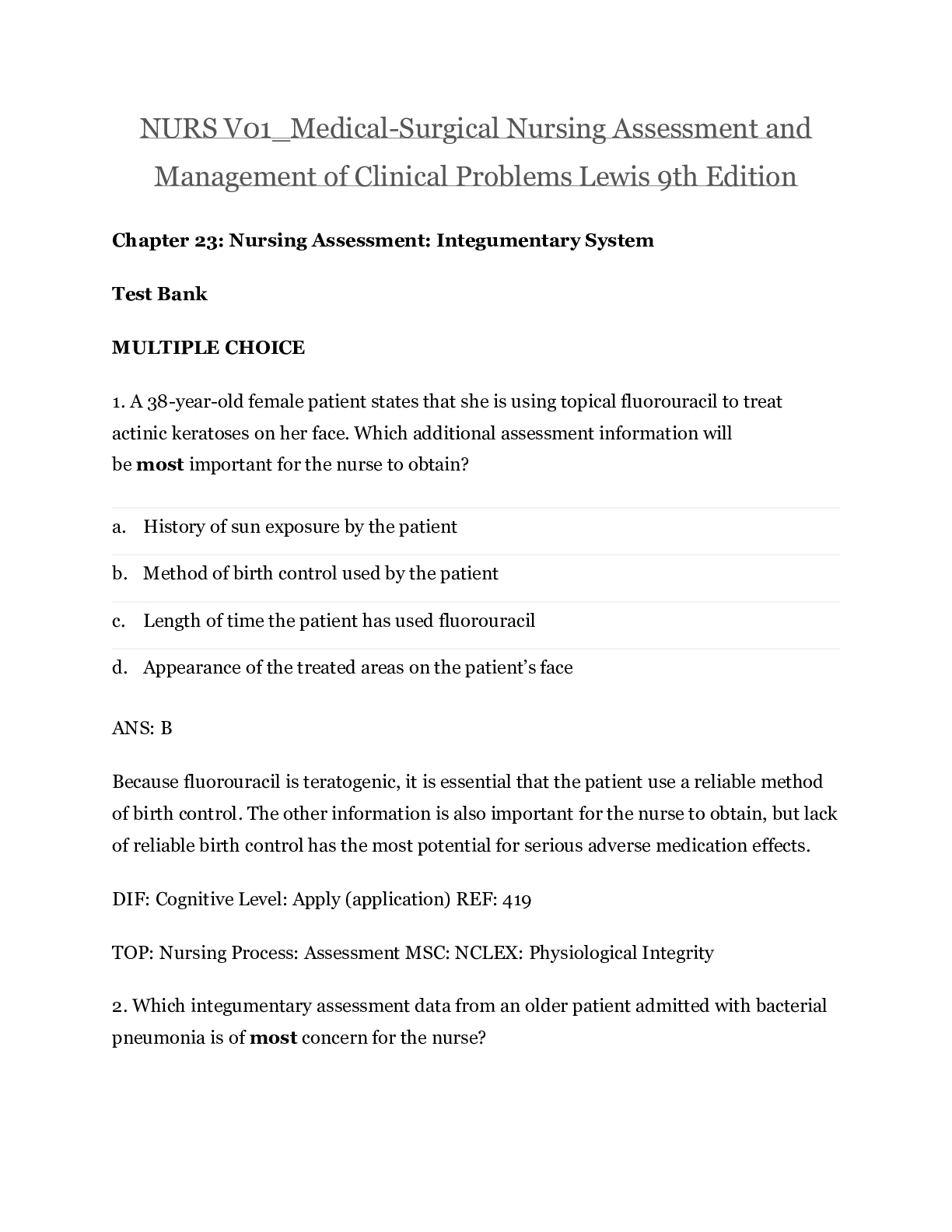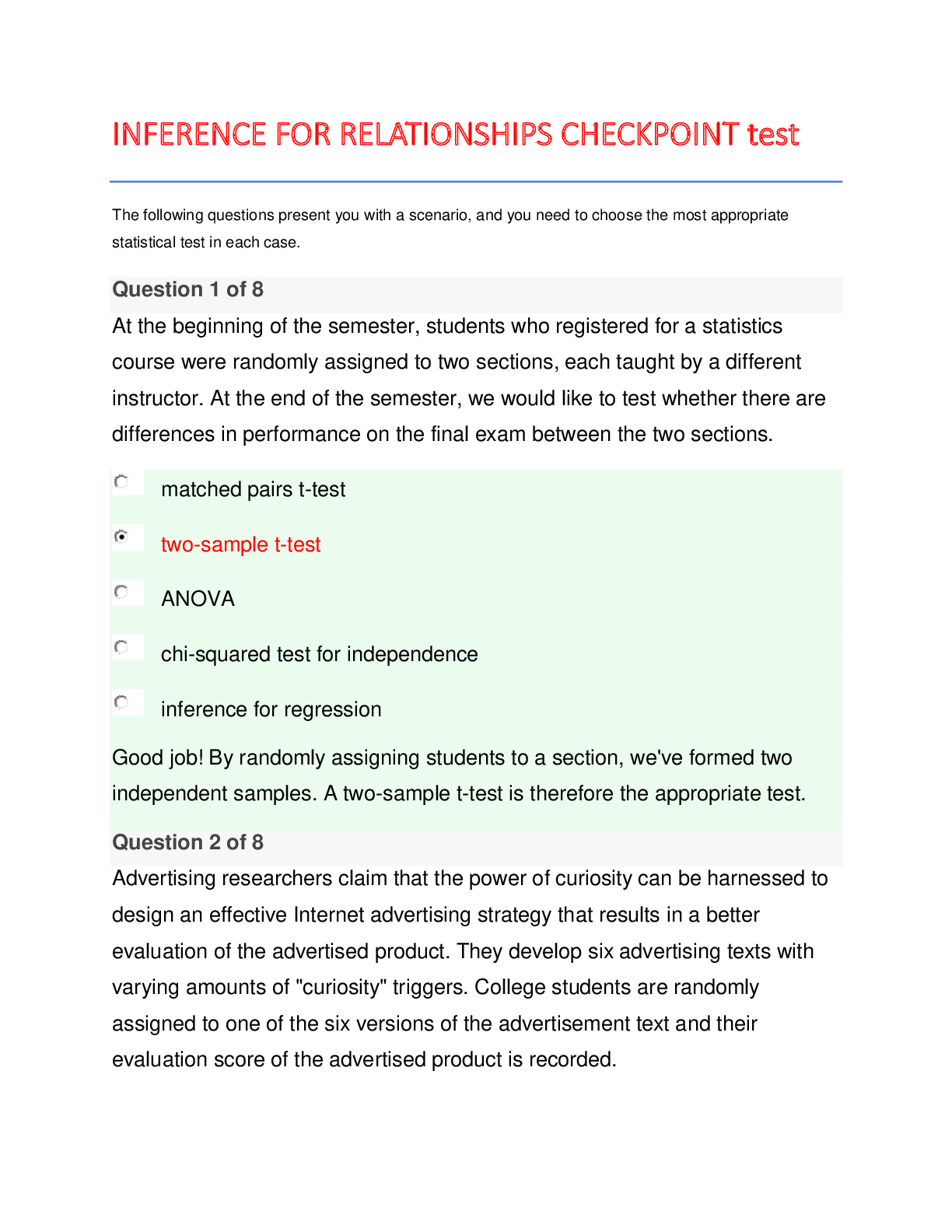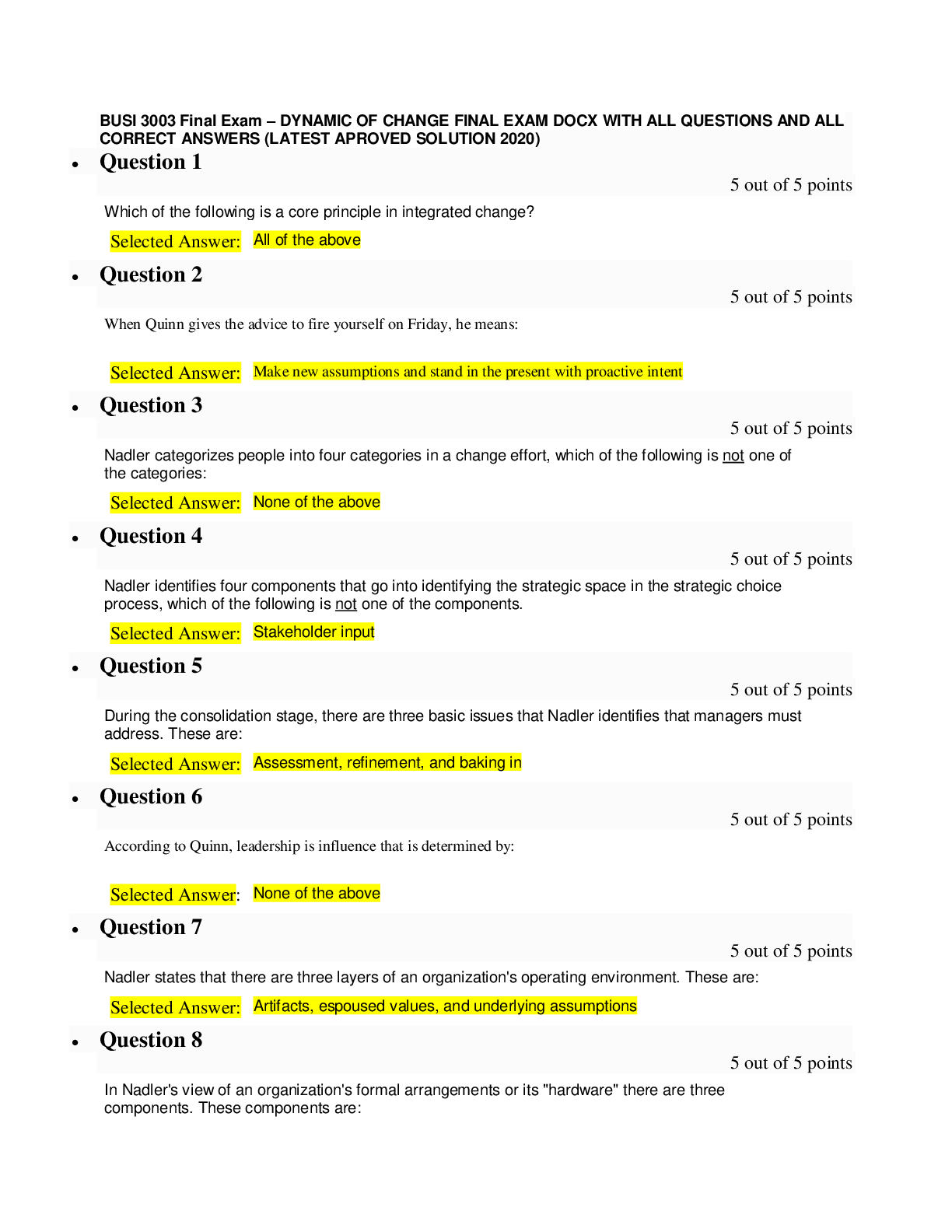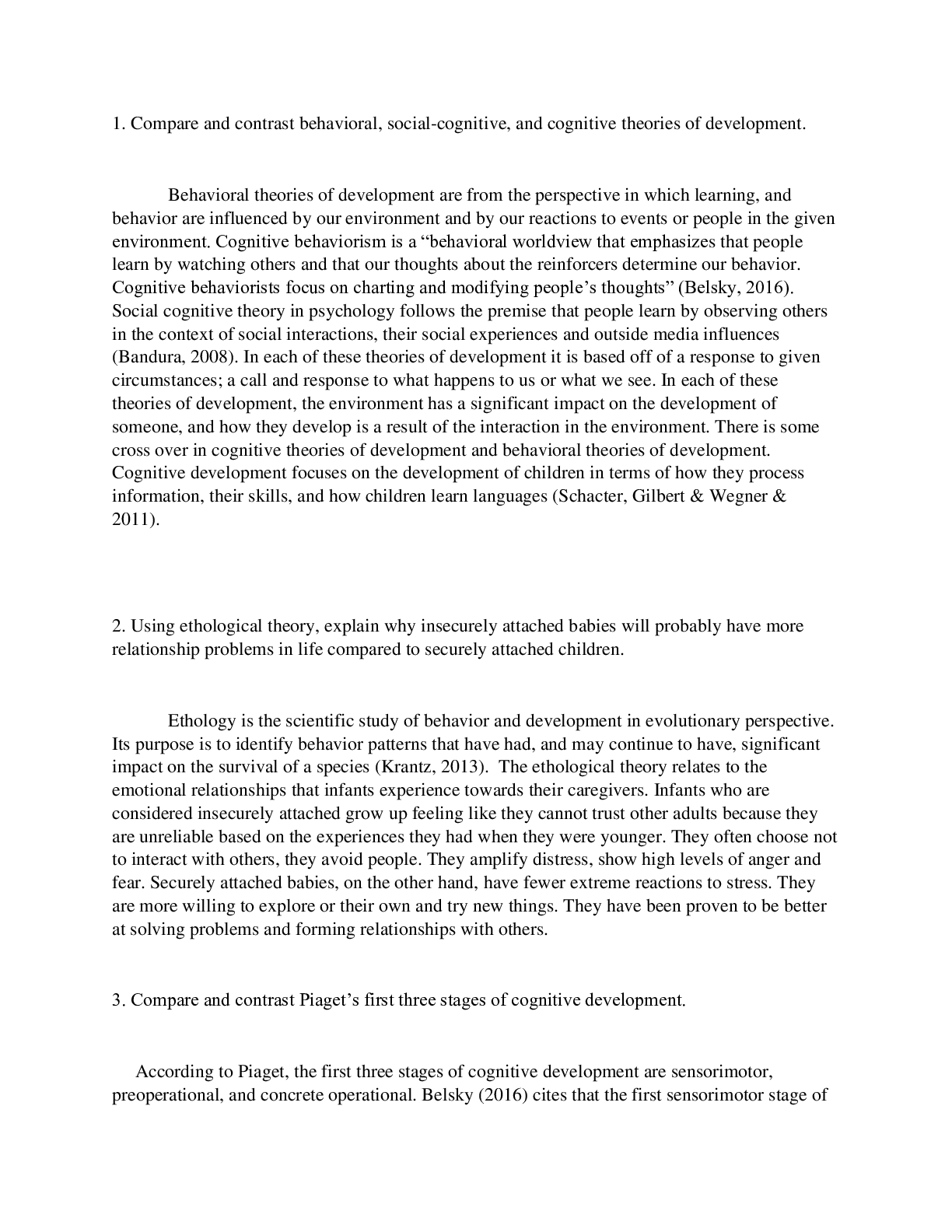*NURSING > EXAM > Sophia Milestone Adult Nursing (NUR 105) Med Surg test Latest Verified Questions and all Correct Ans (All)
Sophia Milestone Adult Nursing (NUR 105) Med Surg test Latest Verified Questions and all Correct Answers with Explanations Chapter 49: Assessment and Management of Patients with Hepatic Disorders
Document Content and Description Below
Sophia Milestone Adult Nursing (NUR 105) Med Surg test Latest Verified Questions and all Correct Answers with Explanations Chapter 49: Assessment and Management of Patients with Hepatic Disorders Soph... ia Milestone Adult Nursing (NUR 105) Med Surg test Latest Verified Questions and all Correct Answers with Explanations Chapter 49: Assessment and Management of Patients with Hepatic Disorders 1. A nurse is caring for a patient with liver failure and is performing an assessment in the knowledge of the patients increased risk of bleeding. The nurse recognizes that this risk is related to the patients inability to synthesize prothrombin in the liver. What factor most likely contributes to this loss of function? 2. A nurse is performing an admission assessment of a patient with a diagnosis of cirrhosis. What technique should the nurse use to palpate the patients liver? 3. A patient with portal hypertension has been admitted to the medical floor. The nurse should prioritize which of the following assessments related to the manifestations of this health problem? 4. A nurse educator is teaching a group of recent nursing graduates about their occupational risks for contracting hepatitis B. What preventative measures should the educator promote? Select all that apply. 5. A nurse is caring for a patient with cancer of the liver whose condition has required the insertion of a percutaneous biliary drainage system. The nurses most recent assessment reveals the presence of dark green fluid in the collection container. What is the nurses best response to this assessment finding? 6. A patient who has undergone liver transplantation is ready to be discharged home. Which outcome of health education should the nurse prioritize? 7. A triage nurse in the emergency department is assessing a patient who presented with complaints of general malaise. Assessment reveals the presence of jaundice and increased abdominal girth. What assessment question best addresses the possible etiology of this patients presentation? 8. A nurse is participating in the emergency care of a patient who has just developed variceal bleeding. What intervention should the nurse anticipate? 9. A nurse is caring for a patient with hepatic encephalopathy. While making the initial shift assessment, the nurse notes that the patient has a flapping tremor of the hands. The nurse should document the presence of what sign of liver disease? 10. A local public health nurse is informed that a cook in a local restaurant has been diagnosed with hepatitis A. What should the nurse advise individuals to obtain who ate at this restaurant and have never received the hepatitis A vaccine? 11. A participant in a health fair has asked the nurse about the role of drugs in liver disease. What health promotion teaching has the most potential to prevent drug-induced hepatitis? 12. Diagnostic testing has revealed that a patients hepatocellular carcinoma (HCC) is limited to one lobe. The nurse should anticipate that this patients plan of care will focus on what intervention? 13. A patient has been diagnosed with advanced stage breast cancer and will soon begin aggressive treatment. What assessment findings would most strongly suggest that the patient may have developed liver metastases? 14. A patient is being discharged after a liver transplant and the nurse is performing discharge education. When planning this patients continuing care, the nurse should prioritize which of the following risk diagnoses? 15. A patient with a liver mass is undergoing a percutaneous liver biopsy. What action should the nurse perform when assisting with this procedure? 16. A nurse is caring for a patient with hepatic encephalopathy. The nurses assessment reveals that the patient exhibits episodes of confusion, is difficult to arouse from sleep and has rigid extremities. Based on these clinical findings, the nurse should document what stage of hepatic encephalopathy? 17. A patient has developed hepatic encephalopathy secondary to cirrhosis and is receiving care on the medical unit. The patients current medication regimen includes lactulose (Cephulac) four times daily. What desired outcome should the nurse relate to this pharmacologic intervention? 18. A nurse is performing an admission assessment for an 81-year-old patient who generally enjoys good health. When considering normal, age-related changes to hepatic function, the nurse should anticipate what finding? 19. A nurse is caring for a patient with a blocked bile duct from a tumor. What manifestation of obstructive jaundice should the nurse anticipate? 20. During a health education session, a participant has asked about the hepatitis E virus. What prevention measure should the nurse recommend for preventing infection with this virus? 21. A patients physician has ordered a liver panel in response to the patients development of jaundice. When reviewing the results of this laboratory testing, the nurse should expect to review what blood tests? Select all that apply. 22. A patient with liver disease has developed jaundice; the nurse is collaborating with the patient to develop a nutritional plan. The nurse should prioritize which of the following in the patients plan? 23. A nurse is amending a patients plan of care in light of the fact that the patient has recently developed ascites. What should the nurse include in this patients care plan? 24. A nurse is caring for a patient who has been admitted for the treatment of advanced cirrhosis. What assessment should the nurse prioritize in this patients plan of care? 25. A patient with a diagnosis of cirrhosis has developed variceal bleeding and will imminently undergo variceal banding. What psychosocial nursing diagnosis should the nurse most likely prioritize during this phase of the patients treatment? 26. A patient with a diagnosis of esophageal varices has undergone endoscopy to gauge the progression of this complication of liver disease. Following the completion of this diagnostic test, what nursing intervention should the nurse perform? 27. A patient with esophageal varices is being cared for in the ICU. The varices have begun to bleed and the patient is at risk for hypovolemia. The patient has Ringers lactate at 150 cc/hr infusing. What else might the nurse expect to have ordered to maintain volume for this patient? 28. A patient with a history of injection drug use has been diagnosed with hepatitis C. When collaborating with the care team to plan this patients treatment, the nurse should anticipate what intervention? 29. A group of nurses have attended an inservice on the prevention of occupationally acquired diseases that affect healthcare providers. What action has the greatest potential to reduce a nurses risk of acquiring hepatitis C in the workplace? 30. A patient has been admitted to the critical care unit with a diagnosis of toxic hepatitis. When planning the patients care, the nurse should be aware of what potential clinical course of this health problem? Place the following events in the correct sequence. 1. Fever rises. 2. Hematemesis. 3. Clotting abnormalities. 4. Vascular collapse. 5. Coma. 31. A previously healthy adults sudden and precipitous decline in health has been attributed to fulminant hepatic failure, and the patient has been admitted to the intensive care unit. The nurse should be aware that the treatment of choice for this patient is what? 32. A nurse is caring for a patient with cirrhosis secondary to heavy alcohol use. The nurses most recent assessment reveals subtle changes in the patients cognition and behavior. What is the nurses most appropriate response? 33. A patient with end-stage liver disease has developed hypervolemia. What nursing interventions would be most appropriate when addressing the patients fluid volume excess? Select all that apply. 34. A patient with liver cancer is being discharged home with a biliary drainage system in place. The nurse should teach the patients family how to safely perform which of the following actions? 35. A patient with cirrhosis has experienced a progressive decline in his health; and liver transplantation is being considered by the interdisciplinary team. How will the patients prioritization for receiving a donor liver be determined? 36. A nurse has entered the room of a patient with cirrhosis and found the patient on the floor. The patient states that she fell when transferring to the commode. The patients vital signs are within reference ranges and the nurse observes no apparent injuries. What is the nurses most appropriate action? 37. A patient with liver cancer is being discharged home with a hepatic artery catheter in place. The nurse should be aware that this catheter will facilitate which of the following? 38. A nurse on a solid organ transplant unit is planning the care of a patient who will soon be admitted upon immediate recovery following liver transplantation. What aspect of nursing care is the nurses priority? 39. A 55-year-old female patient with hepatocellular carcinoma (HCC) is undergoing radiofrequency ablation. The nurse should recognize what goal of this treatment? 40. A nurse is caring for a patient with severe hemolytic jaundice. Laboratory tests show free bilirubin to be 24 mg/dL. For what complication is this patient at risk? [Show More]
Last updated: 1 year ago
Preview 1 out of 17 pages
Instant download
.png)
Buy this document to get the full access instantly
Instant Download Access after purchase
Add to cartInstant download
Reviews( 0 )
Document information
Connected school, study & course
About the document
Uploaded On
Dec 08, 2020
Number of pages
17
Written in
Additional information
This document has been written for:
Uploaded
Dec 08, 2020
Downloads
0
Views
32

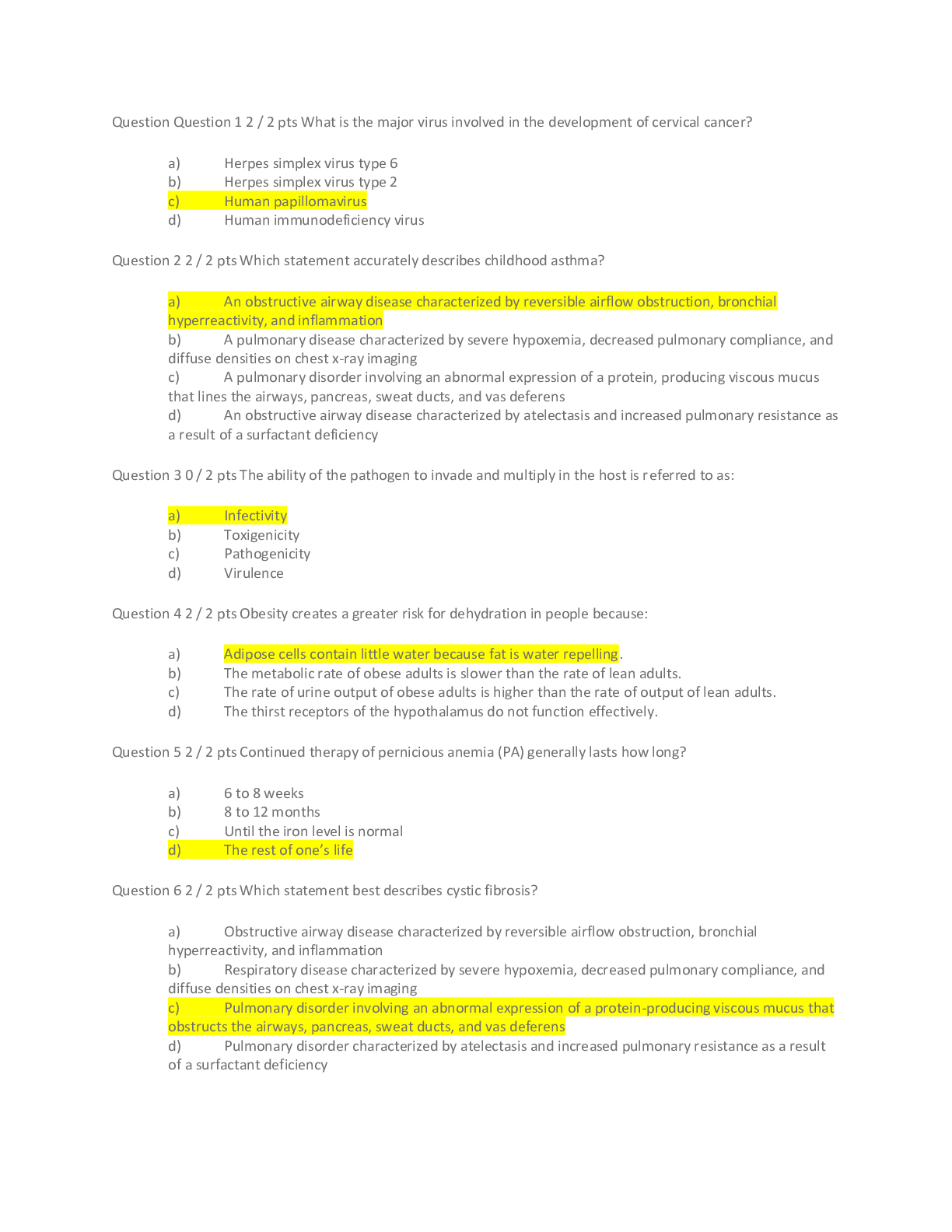
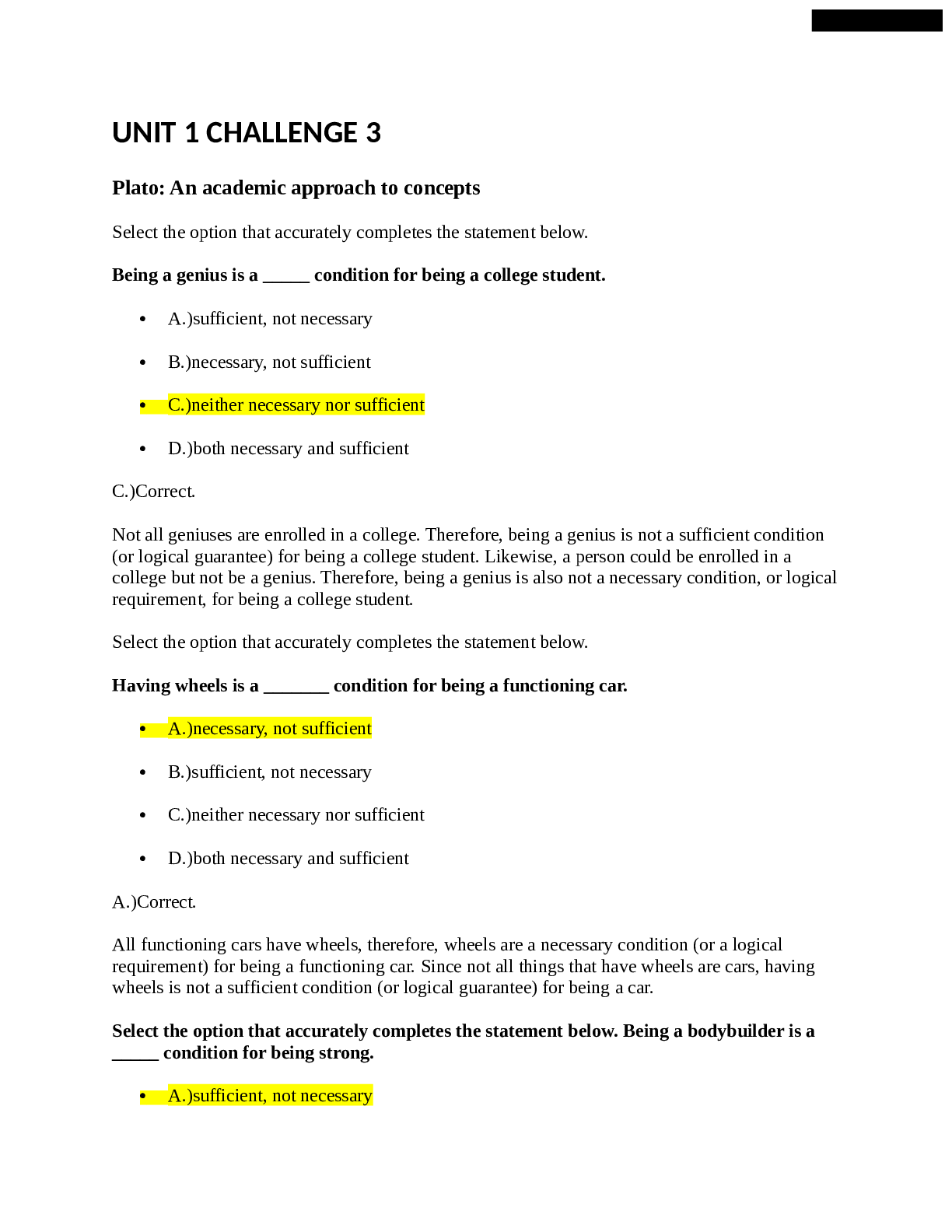
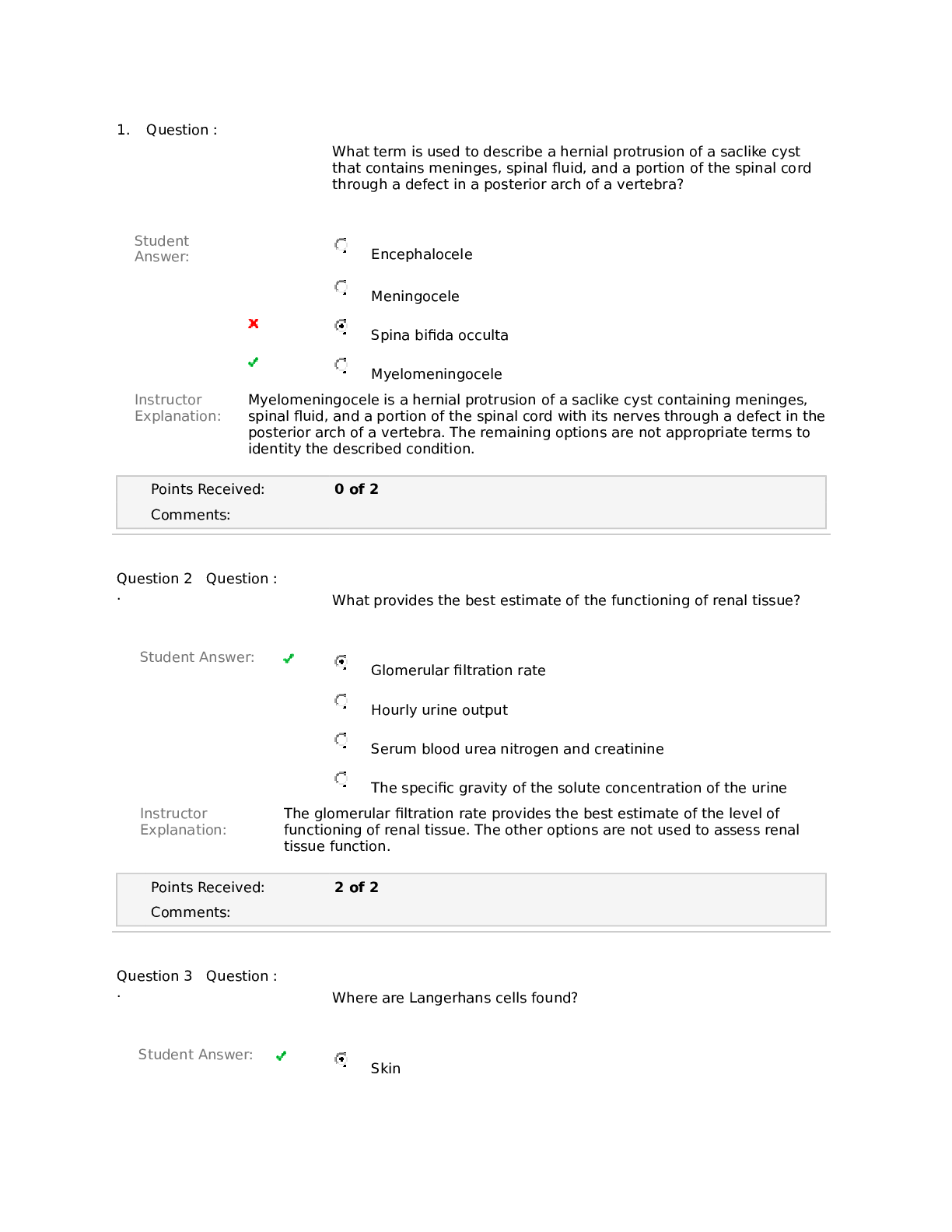


.png)
